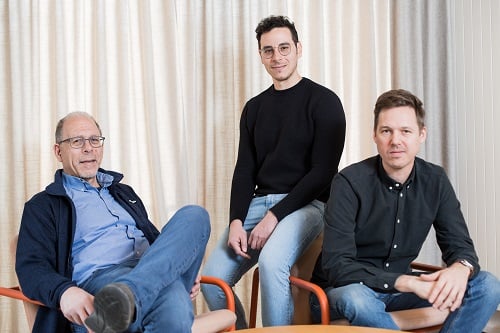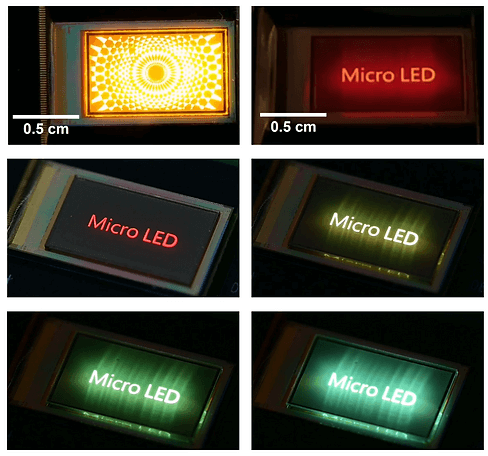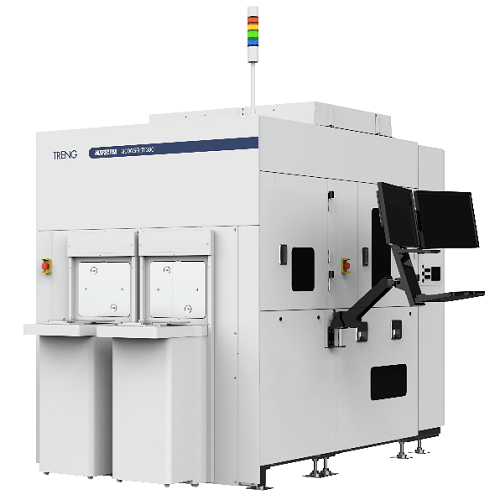Full company details
LightPath Technologies Inc.
 2603 Challenger Tech Court
2603 Challenger Tech Court
Suite 100
Orlando, FL 32826
United States
Teledyne FLIR Defense Awarded $249M IDIQ Contract: Week in Brief: 4/19/24
Photonics.com
Apr 2024BOSTON, April 19, 2024 —
Teledyne FLIR Defense, part of Teledyne Technologies Incorporated, has been awarded an Indefinite Delivery/Indefinite Quantity (IDIQ) contract worth up to $249 million by the U.S. Marine Corps Systems Command for its Organic Precision Fires-Light (OPF-L) program. According to the solicitation statements, the OPF-L systems are designed to provide rifle squads and platoons with a packable “organic, loitering precision strike capability to engage the enemy beyond the line of sight.” Teledyne FLIR will deliver the first 127 loitering munition systems to the Marines for test and evaluation later this summer. The contract has a five-year performance period with a three-year option.

The OPF-L program, which uses a recoverable and reusable loitering munition drone platform. Courtesy of Teledyne FLIR Defense.
ORLANDO, Fla. — Manufacturer and integrator of optical and infrared technologies
LightPath Technologies has received a European Defense license, allowing the company to supply products to the European defense industry. The development significantly expands LightPath's addressable market. Over the past year, LightPath expanded the capacity and capabilities of its Latvia operation to vertically integrate and prepare for a significant increase in sales related to the European defense market. The awarded license functions much like the ITAR American certification, adding LightPath Technologies to a roster of approved military vendors.
PREMSTAETTEN, Austria —
ams OSRAM, an intelligent sensors and emitters company, and
DOMINANT Opto Technologies, a Malaysian manufacturer of automotive LED solutions, have entered into a collaborative partnership. The collaboration is aimed at integrating ams OSRAM’s Open System Protocol (OSP) into DOMINANT, Opto Technologies’ upcoming generation of intelligent RGB LEDs for automotive ambient lighting. OSP is an open, license-free communication technology for connecting RGB LEDs, sensors, and microcontrollers from diverse manufacturers. The step facilitates a more resilient supply chain for automotive manufacturers by enabling them to source LEDs and components from various vendors without reconfiguring system communication when switching suppliers.

(From left) Isospec Analytics founders Thomas Rizzo, Ahmed Ben Faleh, and Stephan Warnke. Courtesy of Isospec Analytics.
LAUSANNE, Switzerland — EPFL spin-off
Isospec Analytics has raised a $1.9M pre-seed round to commercialize new technologies for molecular analysis that rapidly identify unknown molecules in minutes enabling researchers to discover new biomarkers. The company is currently working on the scalability of its molecular analysis platform and introducing automation and machine learning tools for data analysis and insight generation.
BRUSSELS — The
European Commission’s energy department has signed the European Solar Charter, which sets out a series of voluntary actions to be undertaken to support the E.U. photovoltaic sector. The Charter outlines a range of elements which can help to support solar panel manufacturing in Europe, including the early implementation of relevant provisions in the Net-Zero Industry Act on the use of non-price criteria in renewable energy auctions, public procurement, or other relevant support schemes.
PARIS —
Welinq, a quantum interconnects company, has been awarded a €2.5 million ($2.7 million) EIC Transition grant for the development of neutral atom quantum memory technology. The company is developing and commercializing quantum links based on laser-cooled neutral atom quantum memories to interconnect quantum computers in order to increase computational power and deployment in clusters. The funding, Welinq said, provides resources to develop products to enable the quantum internet, a stepping stone towards the clustering of quantum computers.

Q-Pixel's 6800 PPI MicroLED display. Courtesy of Q-Pixel Inc.
LOS ANGELES — MicroLED display startup
Q-Pixel Inc. has debuted an active-matrix color display with 6800 pixels per inch, surpassing current state-of-the-art displays. The display was fabricated entirely using III-V compound microLED pixels. The technology is based on a tunable polychromatic LED pixel, which is a single pixel capable of emitting light across the full color spectrum, without any use of subpixels, quantum dots, color filters, polarizers, or mechanical stacking. The format, Q-Pixel said, simplifies display assembly, reduces manufacturing costs, and enables record pixel densities.
CHANDLER, Ariz. —
Microchip Technology Inc., a fabless semiconductor company, has completed acquisition of Seoul-based
VSI Co. Ltd., a provider of high-speed, asymmetric, camera, sensor, and display connectivity technologies and products based on the Automotive SerDes Alliance open standard for in-vehicle networking. The acquisition boosts Microchip's automotive manufacturing portfolio, enabling the company to better serve the advanced driver assistance systems market. Terms of the transaction were not disclosed.

Toray affiliate TASMIT's 3000SR-?300 PL inspection tool. Courtesy of VueReal.
WATERLOO, Ontario — Micropixel manufacturing company
VueReal has entered into a strategic partnership with semiconductor tool manufacturer
Toray Engineering Co., Ltd. The collaboration will integrate VueReal's MicroSolid Printing platform into Toray affiliate TASMIT's 3000SR-III300 to enable cost-effective, sustainable production of microLED displays and micro semiconductor devices at scale. The VueReal process is designed to enable efficient transfer of LEDs from wafer to backplane.
ESPOO, Finland —
Nokia, a B2B technology company, and
SURF, the collaborative organization for IT in Dutch education and research, have reached a single carrier 800Gbps optical transmission over SURF’s existing 1648 km point-to-point fiber link. The test, the collaborators said, demonstrates that SURF can increase the capacity of existing network infrastructure to handle some of the largest datta exchanges in the world. The transmission is a step in SURF's preparations related to CERN's High-Luminosity Large Hadron Collider upgrade.